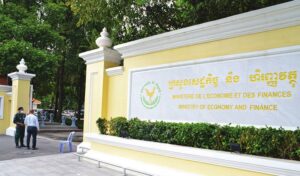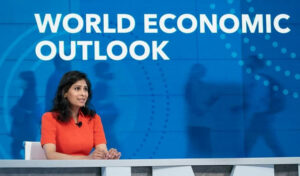IMF Says Modeling With Ministry Of Finance Shows Economy Growing More Than 2 Percent This Year
Modeling by the International Monetary Fund (IMF) and the Ministry of Finance shows that the Cambodian economy will grow by more than two percent this year.
In a report released in Washington Thursday, the IMF said the modeling also showed that closure of the economy’s negative output gap — when production is less than what can be produced at full capacity — would occur in 2022.
The findings are based on two case studies on using macroeconomic frameworks to analyse the impact of COVID-19.
Prepared by the IMF’S Institute for Capacity Development, the case studies focus on Cambodia and Columbia.
The two countries are among seven the institute has helped to adjust frameworks or adopt new ones to analyse the COVID-19 shock — the others being Armenia, Georgia, Ghana, Rwanda and Vietnam.
As part of efforts to build a medium-term budget framework dating back to 2019, the IMF and the Ministry of Finance developed a model known as the Cambodia Macro-Fiscal model.
“When the COVID-19 shocks hit, efforts turned to using the new tools to assess its impact and consider policy responses,” the report said.
The assessment assumed a collapse in tourist arrivals, impacts on domestic demand and supply as well as country risk, and a fiscal stimulus to offset these impacts.
“Simulation results suggested a deep recession in 2020 before a gradual recovery starting in 2021,” the report said.
Based on lower tourist arrivals alone, the model showed the economy shrinking about 1.25 percent in 2020, reversing an earlier projection for 6 percent growth.
With the additional COVID-19 impacts on domestic demand and supply, the slowdown accelerated with the economy contracting around 8.25 percent.
But the model showed the government fiscal stimulus boosting real growth by about 2.25 percent, resulting in a smaller economic contraction of around 5.75 percent.
“The economy will start recovering in 2021, growing at more than 2 percent and in 2022 closing the output gap,” the report concluded.
But it warned that the impact of the stimulus should be interpreted with caution as the model assumed a fiscal multiplier of 0.5 based on cross-country experience.
“Should the fiscal multiplier be lower, the effect of the fiscal stimulus will also be smaller,” it said.
“The case for a smaller fiscal multiplier can be based on the limited effectiveness of the spending, lags in budget implementation, and import leakage.”
In summarising the results of the two case studies, the report noted that the scenarios were “built gradually to incorporate the available information, the pandemic’s full effects, and the policy responses.
“The results demonstrate the value of combining close attention to the data, near-term forecasting, and model-based analyses to support coherent policies,” it said. AKP







